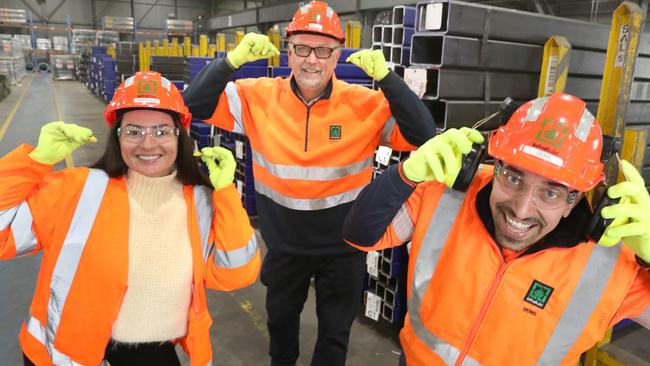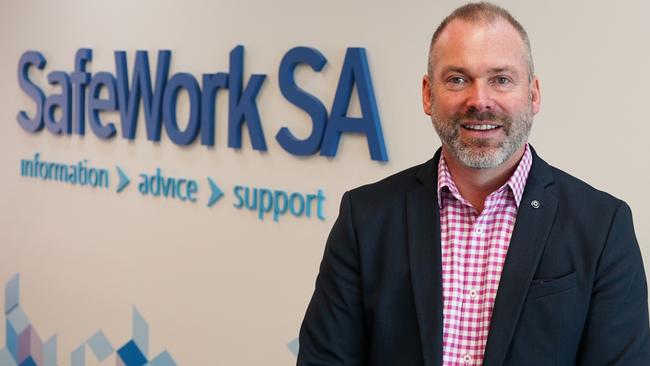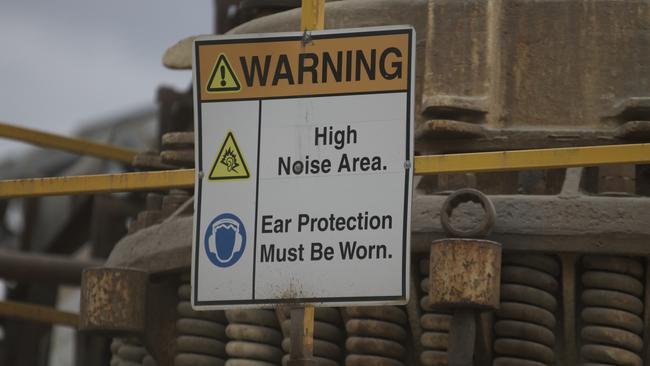SafeWork SA noise safety crackdown to tackle surging workers compensation claims from deaf South Australian workers
A landmark safety crackdown has been launched after South Australians claimed tens of millions of dollars extra compensation.
SA News
Don't miss out on the headlines from SA News. Followed categories will be added to My News.
A landmark safety crackdown has been launched on noisy workplaces as more South Australians seek compensation for life-changing deafness worth tens of millions of dollars.
Return to Work SA, which controls the state’s job-related injury payouts, has reported a 42 per cent surge in “hearing loss” claims over the past five years, official figures show.
Worried authorities have launched SA’s first noise compliance campaign after taxpayers were hit with at least $34m more noise-related workcover claims last financial year.
In an unprecedented safety watchdog blitz, SafeWork SA inspectors are targeting industries with higher proportion of claims including construction, manufacturing, transport, commercial cleaning, lift servicing and mining.

Experts say noise exposure is the most common cause of occupational deafness but, while preventable, damage is irreversible once acquired.
Government research reveals noisy exposure is also linked to a higher risk of workplace accidents.
The SafeWork SA safety audits found failures in almost half of 33 raided businesses across the state since February.
The regulator slapped 14 unnamed firms with legally enforceable “improvement notices” after uncovering various health and safety law breaches.
These include “failures” to identity noise as a hazard, conduct proper volume monitoring, staff testing, or implement adequate safety controls through either engineering or personal protective equipment.
Inspectors, who can enforce changes through prosecutions or fines, were also critical of employers who failed to force workers to wear safety gear or insist on proper training.
In response to inquiries, SafeWork SA executive director, Glenn Farrell, said initial findings of the six-month statewide operation were “concerning” and the rising trend more was needed to prevent harm.
“Hearing loss due to noisy workplaces is resulting in an increase in injury claims across many industries,” he said.

“While these claims may relate to exposure across several years, noise is a hazard that presents itself within many businesses.
“Permanent hearing loss can’t be cured.”
A national strategy aims to cut permanent hearing loss injury claims by 15 per cent over the next decade.
During 2019/202, the state government received 844 claims for “exposure to sound or pressure” or 6.3 per cent of total bills.
Last financial year that surged 42 per cent to 1206, which equated to almost one in 10 of all workers compensation requests. More than a dozen are in dispute.
Taxpayers faced a $180m “outstanding” liability for hearing loss claims for 2022/23, according to RTWSA annual report.
An agency spokesman said hearing loss has risen to the 4th highest claim type despite overall complaints falling 6.5 per cent to almost 13,000 last year.
Port Adelaide-based steel manufacturer and distributer, InfraBuild, is careful with its 40 workers’ hearing with regular testing and protective equipment that can cut 33 decibels to their ears, says regional operations manager Steve Clark, 61.

Mr Clark, a grandfather of Morphett Vale who has been with the northwestern suburbs company for 15 years, said protecting hearing was “very important” when operating machinery, cutting steel or drilling through pieces.
“There’s a lot of sharp noises, which can damage their hearing if not protected,” he said.
Experts say workers with a recorded hearing less of more than 15 decibels are three times more likely to be injured in “multiple” incidents.
Long-term noise exposure can also cause other physical problems such as increased blood pressure and heart rate, stress, reduced concentration, insomnia as well as changes to hormone, cholesterol or stomach acid levels.





